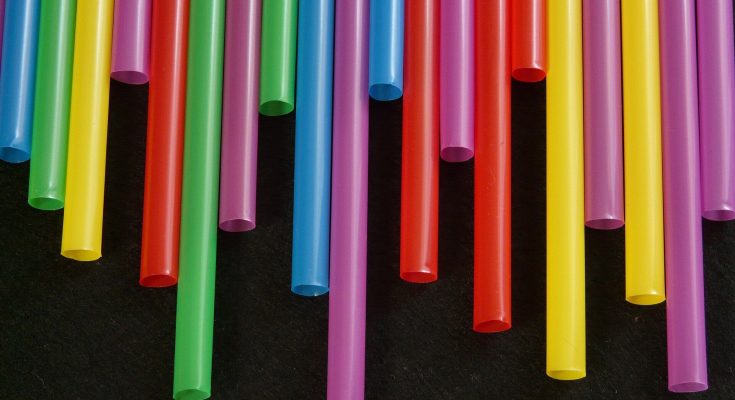Donald Trump recently surprised the world again by signing an action to end what he describes as the “forced use” of paper straws.
Although there is some merit in the argument the White House presents that paper straws simply aren’t fit for purpose, what the paper straw revolution represents is the power of individual change in enacting progressive policy.
Much like recent EU legislation which required all plastic bottles to have caps attached by a tether, the removal of items that tend to be easily littered is a way to help people be more environmentally cautious without any extra effort. Unfortunately, the paper straw appears to have failed in this endeavor.
We should not stop this trajectory because of one fail, however. Even if paper straws are not a viable option, we mustn’t let their fate undermine all initiatives to reduce the impacts of single-use plastics.
The story behind the move away from plastic straws began in 2015, when a disturbing video of a turtle having a plastic straw removed from its nose went viral. Unfortunately, this appears to be a common occurrence, with a video of a turtle with a plastic fork in its nose posted only a few months later. This shows plastic straws themselves are not the issue and that there is a wider problem that everyone should be aware of: plastic which ends up in the ocean is often mistaken for food and eaten by wildlife.
Paper problems
Admittedly, anyone who has used a paper straw will agree that they are not a viable alternative to plastic. The obvious complaint is that they get soggy too quickly. But there are several unseen components that show the switch to paper may not be as great as we once thought.
To begin with, in an effort to keep them water-resistant, paper straws themselves are coated in plastic. This means they cannot be recycled. As they are an organic material, they release greenhouse gas when they decompose in landfill—they can however safely be incinerated, something that is not widely recommended for their plastic counterparts.
As the demand for paper straws skyrocketed, this created a deficit in production, leading to the development of new manufacturing facilities, construction that in itself has a significant environmental impact. Meanwhile, the heavier weight of paper straws can lead to an increase in freighting fuel consumption and associated emissions.
Flimsy plastics are more likely to be littered
Anything, however, is better than plastic. A somewhat misleading statistic that plastic straws account for a mere 0.025% of ocean plastics has been circulating in the argument to bring them back. Although this is true by volume, it is not a correct representation of the sheer number of individual straws recorded in the environment, which is suspected to be as many as 8.3 billion, about one per person on earth.
The fact that straws are so small and lightweight is a big part of the problem, since smaller and more easily fragmented items are far harder to collect. As litter, they punch above their weight.
A child’s plastic beach toy may weigh as much as a few hundred plastic straws, but if littered the straws would do more harm to the environment and wildlife, and would look worse. As straws are made of polypropylene, a flimsier, more brittle type of plastic, it doesn’t take much effort for them to break apart into bite-sized pieces. Because of this, straws turn into microplastics much quicker than the toy, which has a higher chance of eventually being picked up.
To this day, straws continue to be on the top 10 types of plastics found on beaches, and we have yet to see any videos of larger pollutants like those beach toys being pulled from the nose of any animal.
Although we could argue indefinitely as to which straw materials are worse (reuseable metal or glass straws require water and a cleaning agent, another potential contaminant) the overarching sentiment is the most alarming component of Trump’s announcement.
Paper straw pressure came from below
The move towards paper straws was a refreshing direction in environmental preservation, in that it was initiated locally and by producers, not through legislation. In the summer of 2018 Seattle became the first US city to enforce a ban on plastic utensils, straws and cocktail sticks. Soon thereafter, McDonald’s, Starbucks, Alaska Airlines and many others announced they would stop the sale of plastic straws.
Later that year, the UK government and European Union began consultations for national bans which came into effect in 2020 and 2021 respectively. In 2019 Canada followed suit with a ban coming into law in 2022.
It was not until July of 2024 that the then US president, Joe Biden announced his plan to phase out single-use plastics (although the fact sheet and official press release has now been removed from the White House website). This was several years after the global movement got underway—accompanied by the first complaints from Trump on the topic in 2019.
It is important to note that both the EU and UK bans on plastic straws included stirrers and cotton bud sticks. However, their removal from the market caused little to no controversy, mostly because there are adequate alternatives.
Litter producers can drive change
What the movement towards paper straws represents is the power of producers to drive change, in a bottom-up approach. A similarly encouraging scenario can be seen in attitudes towards polystyrene.
Back in 2019 Dunkin’ Donuts announced it would stop using foam cups in certain US markets, and delivered a full removal of the cups in the US by early 2020, while in January 2025 California introduced a state-wide polystyrene ban. Meanwhile, negotiations on a global plastics agreement remain indecisive.
In the wake of a pattern of stalemate and regressive policy, it is on the consumers and producers to take action. We must continue to support producers who invest in innovation to address these issues in a way that makes our lives easier and cleaner.
Provided by The Conversation





